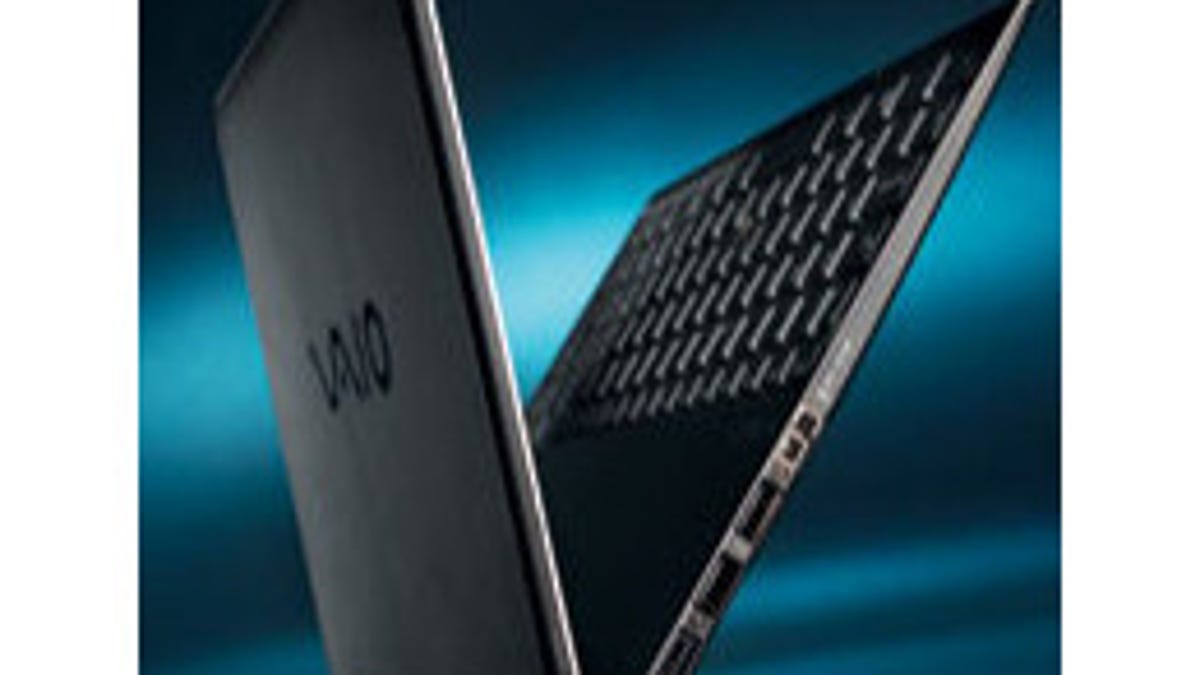Before 2010 MacBook Air, there was 2004 Sony
Steve Jobs proclaimed this week that the new MacBook Air "is the future of notebooks." But it's clear PC makers like Sony and HP saw that future a long time ago. The problem? Execution.

Though a moot point now for consumers, in 2004 Sony came out with an ultrathin wedge-shaped laptop that was a progenitor of the MacBook Air, particularly Apple's 2010 incarnation.
At the Apple event this week in San Francisco, Steve Jobs said the new MacBook Air "is the future of notebooks." That's debatable of course but it's clear that PC makers like Sony and Hewlett-Packard already saw that kind of future a long time ago. The problem was that either their timing was off or they didn't execute the designs as well as Apple--or simply that the laptop was too expensive.
Back in 1998, HP released the ultrathin, 3-pound Sojourn made from magnesium. (And more recently the wafer-thin Dell Adamo XPS eclipsed the older Apple Air by using a heavily wedged design.)
But Sony's offering may be one of the best examples of a laptop that pretty much matches Apple's design--except Sony did it six years ago. The nickel carbon body Vaio X505--no longer available--had some very impressive specs for its time. (See 2004 review.)
Like Apple's new Air, the Vaio X505 used an ultralow voltage Intel chip: a Pentium M "ULV" 1.1GHz processor. And similar to the Air, it was 0.38 inches at it thinnest point and 0.83 inches at its thickest (and keep in mind this was remarkably thin for a design that was probably conceived in 2002). The Sony X505 was smaller than the 11.6-inch Air, packing a 10.4-inch display, but it was only 1.85 pounds.
And the price? When the Sony Vaio X505 came out, it was about $3,000. And that's probably where Apple's new Air breaks the most ground. The ultrasvelte, 2.3-pound Air--which I would argue is the most impressive Apple MacBook design--can be had for $999. Still a bit pricey but far below the boutique, Rodeo-Drive ultrathins of the past. (Note that Apple's original high-end MBA was about $3,000 but mainstream Air models eventually settled in at about half that price.)
So, what does Sony have today? It has the X series, but that's a single-core Intel Atom processor-based design and won't deliver the performance of the Air, which uses a Core 2 Duo processor and Nvidia graphics.

